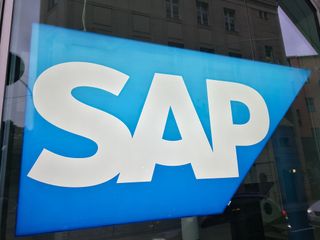How Greggs baked SAP into its business
Baker embarks on digital transformation programme underpinned by SAP

Greggs is midway through an ambitious five-year transformation project, and is using the cloud to extend staff training to thousands of employees with SAP, all the while delivering on business goals.
With 11 bakeries around the UK supporting 1,700 outlets, Greggs' central offices in Newcastle oversee a huge retail operation that sells 1.1 million cups of coffee a week.
But to continue to keep pace with what customers want, and to thrive in a competitive market, the baker has embarked on a five-year transformation project called the Sunrise programme that aims to centralise the business and make it more responsive to customers' needs.
Now two-and-a-half years in, the retailer is seeing some of the benefits despite having much of the road still to travel down.
Calling it a "benefits-led programme" on stage at the UK & Ireland SAP User Group's Connect conference in Birmingham yesterday, James Holmes, Greggs' SAP transformation programme manager, said: "Right from the offset I needed to ensure to the business that we were able to deliver benefits from the early days. The business is seeing huge amounts of money being spent and we needed to demonstrate the investment we were going to get back."
To generate buy-in and confidence in the wider programme, Holmes focused on smaller, quick-win projects at first. One was to implement SAP Ariba to manage its contracts and tendering process. Working with its implementation partner, Keytree, Greggs used Ariba to create a "source to contract" methodology to manage 4,500 suppliers.
"That gave our 500 people who buy goods not for resale the opportunity to request goods and the central procurement team to see those requests and get better control of our costs," said Holmes.
Cloud Pro Newsletter
Stay up to date with the latest news and analysis from the world of cloud computing with our twice-weekly newsletter
Training via the cloud
Greggs then brought in another SAP cloud app, the HCM-focused SuccessFactors, to expand training to around 20,000 employees across the business for the changes that were starting to come, branding it 'Your G-Learning'.
"We made a significant investment with SAP training in the early days to make sure our team had the skills and capability to support it," said Holmes. "We then continued as we started to roll out our technical solutions face to face and started to utilise the learning solution that we started to develop as part of the SuccessFactors suite. We used that for how would we actually physically use the systems."
By involving business departments heads from an early point of the programme, Holmes and his team was able to ensure the project was closely linked to the functional areas it would affect, keeping people engaged and up to date with the training and the purpose of the various projects.
With KeyTree, Greggs also built its first on-premise tool, a Customer Interaction Centre, allowing the business to handle calls and daily enquiries more efficiently, to understand what it would need for a wider SAP transformation project.
"We wanted a small project so we could understand as a business how SAP was going to work," Holmes explained. "We didn't have project managers, programme managers. or any risk processes in place before we started this programme so we needed to make sure we had everything ready and wanted to have a go at it in more of a controlled small project."
Working with KeyTree on the various transformation projects comprising Sunrise, Holmes deliberately mixed Greggs developers with KeyTree's own team.
He said: "We had our development team in with keytree to do a lot together which was really important for knowledge share."
In order to keep the project on track and ensure it was meeting business goals, Holmes had business leads present on progress to the IT team, and also held a two-hour weekly with the board to discuss any issues or goals.
Keeping it vanilla
However, people still wanted to customise their SAP programmes, which could have led to issues in future with messy codebases to untangle and systems harder to upgrade. So Greggs CEO Roger Whiteside led a mantra to 'keep it vanilla', forcing the business to require board approval if they wanted to change anything.
"We had the business have to come and ask permission to make key changes to the heart of the system," said Holmes. "So we put rigorous and maybe in the early days over the top, but it sent the right message to the business - keep it vanilla."
Future projects
That still left room for innovation around the edges, though, with Greggs and KeyTree rolling out a procurement platform, 'Purchase to Pay', to 500 users with minimal effort. This was another benefit of the early investment in training paying off, as users were able to learn how to use the new tool quickly through G-Learning.
Now the quick wins have proved the business case, Greggs is concentrating on larger scale projects.
"We're currently rolling out retail forecasting and replenishment to our 1,700 shops," Holmes said. "Next we have our warehousing and manufacturing to do. We will continue to do that and the teams are being mobilised for the project to go live next year."
Elsewhere, he thinks further adoption of SAP is likely. "We are starting to simplify our business and starting to take some of the aging aspects out of our business and we'll continue to do that as we go through the programme. We'll be moving a lot more of our systems onto SAP."




